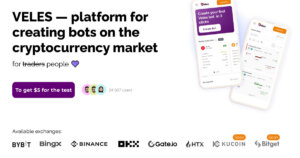Crypto Exchanges vs Stock Exchanges: How Do They Compare?
Photo by Oliver Klein on Pixabay
While on the surface, cryptocurrency exchanges may resemble stock markets in some ways — matching buyers with sellers and publishing prices — when examined closely, they differ quite vastly in terms of their overall associated risks and functionality.
At a basic level, both crypto and stock exchanges serve as places for asset trade, but the similarity ends there. This is because crypto exchanges not only charge brokerage commissions for facilitating currency trades but also hold on to an investor’s assets.
Another point of difference lies in the fact that while stock markets have become highly regulated over the years, their digital-asset counterparts remain largely unsupervised across many regions of the globe, thereby leaving room for a lot of financial gray areas to creep in.
Financial risks posed by crypto exchanges
To put it bluntly, the core danger that alt asset-investors face when investing their funds via digital exchanges is that they can potentially lose their entire savings either due to cases of theft by hacking or by the exchange itself shutting down.

In one of the recent economic scandals to plague the crypto world, Coincheck servers were compromised by cybercriminals who made their way with nearly $500 million worth of digital tokens.
Other instances where hackers severely exposed the frailty of digital exchanges include:
- Mt. Gox – once the world’s number one digital currency exchange, hackers stole more than $473 Million worth of virtual assets from the platform back in 2014.
- Bitfinex – touted as the second biggest hack in the history of cryptocurrencies, the Hong Kong-based exchange platform saw cyber-thieves get away with a staggering 120,000 BTC back in August 2016.
How can investors insulate themselves from such problems?
The easiest way to minimize risks associated with digital thefts is by keeping any virtual holdings in an offline wallet, such as a Ledger or Trezor — also referred to as cold wallets. However, for day-traders, this option is not only cumbersome but also quite impractical as it can be a pain to repeatedly transfer asset back-and-forth from an online storage medium to an offline one.
Also worth noting is that recently, exchange platform Gemini Trust Co. solicited the services of financial powerhouse NASDAQ Inc. to keep tabs on potentially abusive trade activities pertaining to Bitcoin and Ethereum that might be taking place on their servers.
Where do governments factor into all of this?

Since the crypto boom of 2017, authorities all around the world are waking up to the imminent reality that cryptocurrency trading activity is going to keep increasing as time goes on.
While Japan established a licensing system for digital-asset exchanges last year, countries like Malta have also been working to create an economic framework that will help cement the island nations place as being one of the primary hubs for cryptocurrency trade and exchange.
Looking Ahead
Recently, Bank of England governor Mark Carney called for financial regulators across the world to end the so-called ongoing cryptocurrency “anarchy” and hold this burgeoning industry to the same standards as the rest of the financial domain.

Similarly, last month, ex-New York State Attorney General Eric Schneiderman issued a letter of scrutiny to 13 exchanges seeking key information regarding the workings of their security mechanisms as well as the measures they were taking to protect investor holdings.
Financial analysts such as David Lee, author of the Handbook of Digital Currency, believe that decentralized exchanges will become the primary source for cryptocurrency trade in the coming 5-10 years.



 Arkham Intelligence
Arkham Intelligence 


















































































